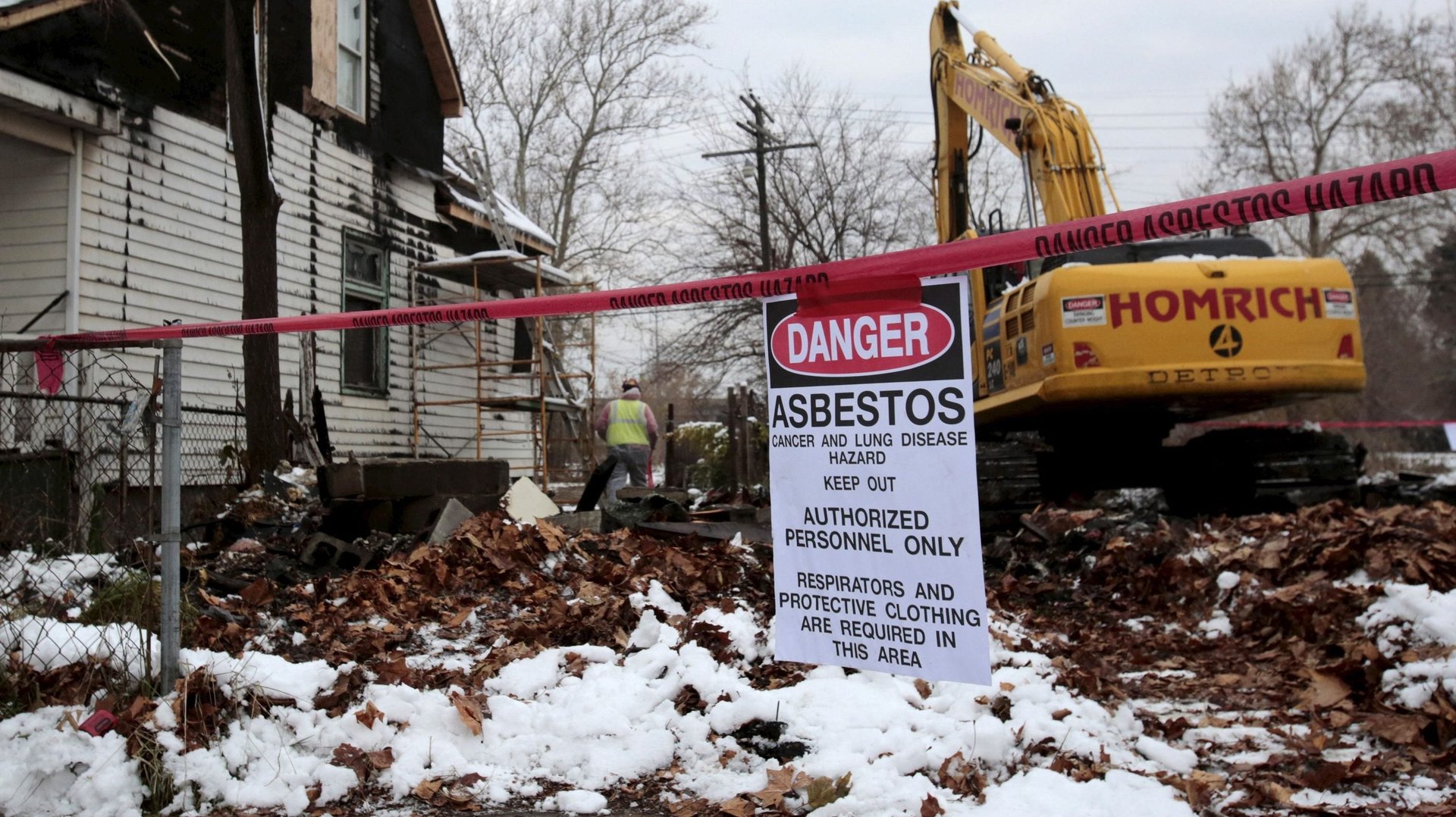The US never banned asbestos. Now Trump may assist its comeback
Asbestos is indisputably a carcinogen. But the US has never fully banned it, unlike more than 60 other countries. Instead, the US opted to restrict many common uses of it; spray-on asbestos, used to insulate or fireproof buildings, has been illegal since the 1970s, for example. But other uses are still legal, a fact which the Trump administration is using to open up new avenues for asbestos products to be approved.


Asbestos is indisputably a carcinogen. But the US has never fully banned it, unlike more than 60 other countries. Instead, the US opted to restrict many common uses of it; spray-on asbestos, used to insulate or fireproof buildings, has been illegal since the 1970s, for example. But other uses are still legal, a fact which the Trump administration is using to open up new avenues for asbestos products to be approved.
Trump himself has never been a fan of asbestos bans. In 2012, he tweeted that if asbestos hadn’t been removed from the World Trade Center, the Twin Towers would not have burned down. In his 1997 book, “The Art of the Comeback,” he wrote that he believed that anti-asbestos efforts were “led by the mob,” the Washington Post notes.
Now, a new decision could lead to more approved uses for asbestos in the US, prompting one Russian asbestos company to put Trump’s face on its packaging.
The fine print on “new uses” for asbestos
On July 1, the US Environmental Protection Agency issued a “significant new use rule,” which invites manufacturers to petition the EPA to seek approval of any new asbestos product on a case-by-case basis.
The rule says that the EPA will evaluate new asbestos products as “new use” if they’ve determined they aren’t currently being manufactured. The categories the EPA says it will consider as new uses include “adhesives, sealants, and roof and non-roof coatings; arc chutes; beater-add gaskets; extruded sealant tape and other tape; filler for acetylene cylinders; high-grade electrical paper; millboard; missile liner; pipeline wrap; reinforced plastics; roofing felt; separators in fuel cells and batteries; vinyl-asbestos floor tile; and any other building material (other than cement).”
Many of these are the same products that the EPA considers “legacy” uses. Earlier this year, in response to an Obama-era push to reevaluate harmful substances, the Trump administration weakened the way it evaluates chemicals for harm, declaring that asbestos used in floor tile, roofing, car brakes, batteries, and a range of other places would be considered “legacy” applications and beyond the scope of asbestos’s risk evaluation.
So while new products in those categories might be reviewed for approval, they won’t be studied in deciding whether asbestos is truly harmful enough to ban, or whether to impose laws about asbestos already in homes, businesses and schools. (The government also decided not to consider asbestos disposal sites to be a source of health hazard.)
An undisputed health hazard
The exact death toll from asbestos remains unknown, but Environmental Working Group, a nonprofit that advocates on environmental health issues, estimates that between 12,000 and 15,000 people in the US die each year from exposure. A recent study looking at global impact estimates that 255,000 people die each year from asbestos exposure around the world, of which 90% are workers. By far, the heaviest toll is on people who handle asbestos on the job.
Asbestos causes “lung cancer, mesothelioma, cancer of the larynx and ovary, and asbestosis,” according to the World Health Organization.
When a pipe insulated with asbestos exploded in New York City’s Flatiron District last month, the city evacuated more than 45 buildings and workers spent nearly a week cleaning it up.